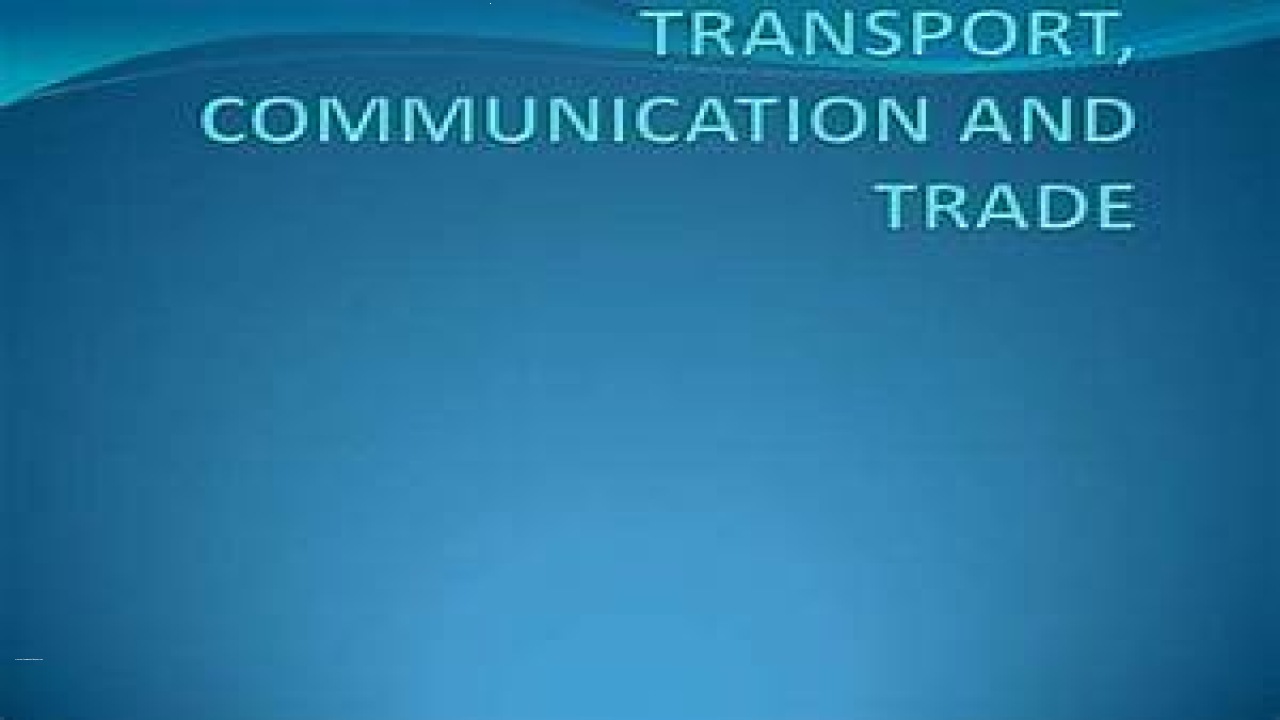Transport, Communication, and Trade
Transport, communication, and trade are essential components of economic development and global commerce. In this article, we will explore the meaning, history, types, examples, and issues associated with transport, communication, and trade.
Meaning of Transport, Communication, and Trade
Transport refers to the movement of goods, people, or information from one place to another, using various modes of transportation such as road, rail, air, or sea. Communication refers to the exchange of information or ideas between individuals or groups, using various technologies such as telephones, computers, or the internet. Trade refers to the exchange of goods or services between individuals or groups, often involving the buying and selling of goods across borders.
History of Transport, Communication, and Trade
Transport, communication, and trade have a long history, dating back to ancient times when traders would transport goods by land and sea to exchange with other civilizations. The development of new technologies, such as the printing press, telegraph, and steam engine, helped to facilitate the growth of communication and transportation networks during the industrial revolution.
In the 20th century, the development of new technologies, such as the automobile, airplane, and computer, further revolutionized transport, communication, and trade, making it easier and faster to move goods, people, and information across great distances.
Types of Transport
Transport can be broadly categorized into several types, including:
- Road Transport: Road transport involves the movement of goods or people by road, using various types of vehicles such as cars, trucks, and buses.
- Rail Transport: Rail transport involves the movement of goods or people by rail, using various types of trains such as passenger trains or freight trains.
- Air Transport: Air transport involves the movement of goods or people by air, using various types of aircraft such as commercial planes, private jets, or helicopters.
- Sea Transport: Sea transport involves the movement of goods or people by sea, using various types of vessels such as cargo ships or cruise ships.
Types of Communication
Communication can be broadly categorized into several types, including:
- Verbal Communication: Verbal communication involves the exchange of information or ideas using spoken words, such as face-to-face conversation or telephone conversation.
- Written Communication: Written communication involves the exchange of information or ideas using written words, such as letters, emails, or reports.
- Non-Verbal Communication: Non-verbal communication involves the exchange of information or ideas using gestures, facial expressions, or body language.
Types of Trade
Trade can be broadly categorized into several types, including:
- Domestic Trade: Domestic trade involves the exchange of goods or services within a country, typically between buyers and sellers in different regions or cities.
- International Trade: International trade involves the exchange of goods or services between countries, typically involving the import and export of goods across borders.
- E-commerce: E-commerce involves the buying and selling of goods or services online, using various platforms such as Amazon, Alibaba, or eBay.
Examples of Transport, Communication, and Trade
There are many examples of transport, communication, and trade around the world, including:
- The Panama Canal: The Panama Canal is a major transport route that connects the Pacific and Atlantic Oceans, allowing ships to bypass the lengthy and dangerous journey around the southern tip of South America.
- The Internet: The internet is a major communication network that allows people to exchange information and ideas across great distances, using various technologies such as email, social media, and video conferencing.
- The Trans-Pacific Partnership: The Trans-Pacific Partnership is a trade agreement between several countries in the Pacific Rim, aimed at reducing trade barriers and promoting economic growth.
Issues Associated with Transport, Communication, and Trade
While transport , communication, and trade can bring many benefits, there are also several issues associated with their development and operation. Some of these issues include:
- Environmental Concerns: Transport and trade can generate significant environmental impact, including air and water pollution, habitat destruction, and greenhouse gas emissions. This can have a negative impact on local ecosystems, biodiversity, and the health and well-being of local communities.
- Economic Concerns: Transport, communication, and trade can also create economic dependencies and inequalities, particularly in developing countries where access to transport and communication infrastructure may be limited. This can lead to economic vulnerability and exploitation, as well as conflicts between different groups.
- Social Concerns: Transport, communication, and trade can also have significant social impact, including issues such as worker exploitation, cultural commodification, and loss of cultural identity. This can have a negative impact on the well-being and dignity of local communities.
- Security Concerns: Transport, communication, and trade can also raise concerns about security and safety, particularly in areas where there is political instability or conflict. This can lead to issues such as terrorism, piracy, and human trafficking, which can have a significant impact on the well-being and safety of individuals and communities.


